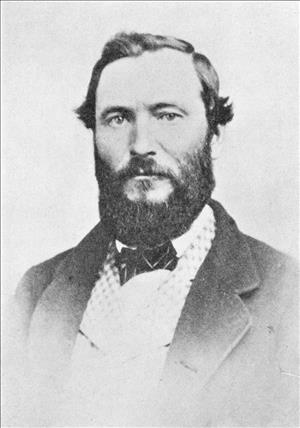Little is known of Charles Plummer before his arrival in the village of Seattle in 1853. Although he was too late to claim the best land, he achieved early success as a merchant. In June of 1853, he opened a store with partner John A. Chase. Plummer and Chase also bought a sawmill below the mouth of Cedar River and a coal mine near Black River in King County. Plummer started the Seattle's first brickyard, constructed a waterworks to compete with Henry L. Yesler's flumes, and built a livery stable. He bought a hotel, called the Conklin House after its former owner, the tart-tongued "Mother Damnable" Mary Ann Conklin. Plummer owned a Seattle waterfront dock and, as town postmaster, served Seattle and ships and skippers from throughout the Pacific basin until his death on August 29, 1866.
Seattle Pioneer
Although little information is extant about Plummer, he was a key player in the early commercial growth of King County. One of his most important contributions, with Charles Terry, was as outfitter for pack trains on their way to recently discovered (1858) Eastern Washington gold fields. His cousin, Alfred, was a founder of Port Townsend.
In 1854, Plummer built an imposing residence for his bride, Ellender Smith, sister of another King County pioneer, Dr. Henry A. Smith (Smith's Cove). Ellender died in 1859 while giving birth to their twin sons. A year later, at Alki, Plummer married a widow, Mrs. Sarah J. Harris, with Justice of the Peace David S. "Doc" Maynard officiating.
Plummer built a hall over his store to accommodate meetings and entertainment. The hall provided a venue for everything from court sessions to dances, concerts, and performances by Shakespearean actors and poets. The Good Templars Lodge and Plummer's own Masonic St. John's Lodge also used the hall for meetings. Upon his death on August 29, 1866, he was buried with Masonic honors at the first city-owned cemetery, on Denny Way and Dexter Avenue (in 1998 a public park and headquarters of Seattle's Park Department). His stepson, George W. Harris, continued for years to manage the many enterprises that Plummer founded during his busy Seattle decade.

